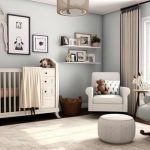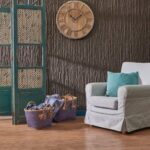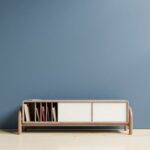Creating a cohesive and well-designed living space involves more than just picking out furniture and accessories. It’s about how to integrate the elements in your home decor to reflect your unique style and personality. By carefully combining colors, textures, shapes, patterns, and lighting, you can create a truly harmonious environment that feels inviting and visually appealing.
When it comes to integrating elements in home decor, one of the first steps is identifying your design style. Whether you lean towards modern, traditional, eclectic, or something in between, understanding your preferences will help guide your choices throughout the decorating process. From there, you can move on to color coordination, mixing textures, balancing shapes and patterns, arranging furniture for flow and functionality, personalizing with accessories, and utilizing different types of lighting.
By following these guidelines and tips for integrating elements in your home decor, you can transform your living spaces into a reflection of your personal taste and create a welcoming environment that truly feels like home. Stay tuned as we explore each step in detail and provide real-life examples of successfully integrated home decor elements to inspire your own decorating journey.
Identifying Your Design Style
When it comes to home decor, one of the key factors in creating a cohesive and visually appealing space is identifying your design style. Whether you lean towards a modern, traditional, eclectic, or any other style, understanding and embracing your preferences will help you integrate different elements seamlessly throughout your home. Knowing your design style will serve as a guiding principle as you make decisions about colors, textures, shapes, patterns, furniture placement, accessories, and lighting.
For those who resonate with a modern design style, clean lines, minimalist aesthetics, and neutral color palettes are typically prevalent. To intigrate the elements in your home decor with a modern flair, opt for sleek furniture pieces made of materials like metal and glass. Incorporate bold geometric patterns sparingly to add visual interest without overwhelming the space. When selecting accessories, choose items that are functional yet stylish to maintain the sleek look of modern design.
On the other hand, if you are drawn to traditional design styles characterized by sophisticated furnishings and classic patterns, integrating elements in your home decor can involve rich wood tones and ornate details. Choose furniture with intricate carvings and upholstered pieces in luxurious fabrics like velvet or silk. To add texture to the space while staying true to tradition, incorporate oriental rugs or tapestries. Personalize your traditional home decor with family heirlooms or vintage finds that hold sentimental value.
| Design Style | Key Elements |
|---|---|
| Modern | Clean lines, minimalist aesthetics, metal/glass furniture |
| Traditional | Rich wood tones, ornate details, luxurious fabrics |
Color Coordination
One of the essential aspects of how to integrate the elements in your home decor is through color coordination. Selecting a color scheme for your space can set the tone and mood of the room, creating a cohesive look that ties everything together. Whether you prefer a monochromatic palette for a minimalist feel or bold, contrasting colors for a more vibrant atmosphere, sticking to your chosen color scheme is key.
When choosing a color scheme, consider the purpose of the room and how you want it to make you feel. Soft, neutral tones like beige, ivory, and gray can evoke a sense of calm and tranquility in bedrooms and living rooms.
On the other hand, rich jewel tones like emerald green, sapphire blue, or ruby red can add drama and sophistication to dining rooms or home offices. By identifying your desired mood and style, you can narrow down your options and create a harmonious look within your space.
To effectively integrate the elements in your home decor through color coordination, consider incorporating different shades of your chosen colors throughout the room. This can be done through wall paint, furniture upholstery, decorative accents like throw pillows or rugs, and artwork.
Mixing various shades within the same color family adds depth and dimension to your space while maintaining visual unity. Experiment with different combinations until you find the perfect balance that reflects your personal style and enhances the overall aesthetic of your home.
Mixing Textures
Understanding the Importance of Texture
Texture plays a crucial role in creating a visually appealing and dynamic home decor. By incorporating different textures like wood, metal, glass, and fabrics, you can add depth and dimension to your space. Textures not only add tactile interest but also help to create a well-rounded and balanced design. Understanding how to integrate various textures is key to achieving a cohesive look in your home decor.
Choosing Complementary Textures
When mixing textures in your home decor, it’s essential to choose complementary elements that work well together. For example, pairing rough textured materials like raw wood with smooth surfaces like glass can create an interesting contrast. Experiment with different combinations of textures to see what works best for your space. Don’t be afraid to mix unexpected textures for a unique and personalized touch.
Tips for Incorporating Textures
One way to incorporate textures is by layering different materials throughout your space. Mix and match textiles like plush velvet cushions with a sleek leather sofa or combine a rustic wooden coffee table with metallic accents. Additionally, consider adding natural elements like plants or stone surfaces to bring an organic texture into your home. By strategically selecting and combining textures, you can create a harmonious and inviting environment that reflects your personal style.
By following these tips on mixing textures in your home decor, you can achieve a well-balanced and visually intriguing design. Experiment with different combinations of materials, colors, and patterns to find what resonates with you. Remember that integrating textures is all about creating harmony within your space while adding personality and flair. With careful consideration and creativity, you can transform your home into a beautifully curated sanctuary that embodies your unique taste and aesthetic preferences.
Balancing Shapes and Patterns
Understanding the Impact of Shapes and Patterns
Shapes and patterns are essential elements in home decor that can greatly enhance the visual appeal of a space. Whether you prefer geometric shapes for a modern look or intricate patterns for a traditional feel, understanding how to balance these elements is crucial. By strategically incorporating shapes and patterns, you can create a cohesive design that adds depth and interest to your home decor.
Creating Harmonious Combinations
When it comes to integrating shapes and patterns in your home decor, it’s important to create harmonious combinations that work well together. Consider mixing different shapes such as circles, squares, triangles, and rectangles to add variety and contrast. Likewise, experiment with patterns like stripes, florals, chevron, or quatrefoil to bring texture and personality into a room. By finding the right balance between shapes and patterns, you can achieve a visually appealing space that reflects your unique style.
Tips for Successfully Intigrating Shapes and Patterns
To effectively integrate shapes and patterns in your home decor, start by selecting a focal point in the room where you want to showcase these elements. Whether it’s through an accent wall, area rug, throw pillows, or artwork, choose one main piece that sets the tone for the rest of the design. From there, mix and match different shapes and patterns while keeping scale and proportion in mind.
Experiment with layering textures to add depth and dimension to your space. Remember that less is more when it comes to incorporating these elements – aim for a balanced look that isn’t overwhelming. By following these tips, you can easily elevate your home decor with stylish shapes and captivating patterns.
Furniture Placement
When it comes to creating a well-balanced and cohesive home decor, furniture placement plays a crucial role in determining the flow and functionality of a room. The way you arrange your furniture can either enhance or hinder the overall design of your space. Understanding the key principles of furniture placement can help you achieve a harmonious look that not only looks good but also works well for your daily needs.
One important aspect to consider when arranging furniture is the layout of the room. Take into account the architectural features, such as windows, doors, and focal points, when deciding where to place your furniture pieces. This will help create a natural flow and balance within the space. Additionally, consider the traffic flow in the room and leave enough space for easy movement around each piece of furniture.
Another key factor in furniture placement is creating functional zones within a room. Define specific areas for different activities, such as lounging, dining, or working, by grouping related furniture together. This will not only make the room more efficient but also visually appealing. Play around with different furniture arrangements until you find one that maximizes both flow and functionality in your space.
To truly integrate all elements of your home decor seamlessly through furniture placement, consider mixing different styles, textures, and shapes in a strategic way. For example, pairing a modern sofa with a traditional coffee table can create an interesting contrast while still maintaining harmony in the overall design scheme. By carefully planning and executing your furniture arrangement, you can achieve a well-integrated look that reflects your personal style and maximizes both form and function in your home.
Personalizing With Accessories
Personalizing your home with accessories is a crucial step in creating a space that reflects your unique style and personality. Whether you are a fan of vintage finds, minimalist decor, or vibrant artwork, incorporating personal touches can make a significant impact on the overall look and feel of your home. Here are some tips on how to integrate these elements into your home decor:
- Choose meaningful art pieces: Select artworks that resonate with you emotionally or artistically. Whether it’s a painting by a local artist or a family heirloom, incorporating meaningful art can instantly add character to your space.
- Showcase your collections: If you have a passion for collecting items such as antiques, books, or pottery, use them as decorative accents in your home. Displaying these collectibles can tell a story about your interests and hobbies.
- Mix old with new: Don’t be afraid to mix vintage pieces with modern decor items. This juxtaposition can create a visually dynamic space that feels curated and personalized.
Accessories play a vital role in tying together the various elements of your home decor, from colors and textures to shapes and patterns. By strategically placing accessories throughout your space, you can create visual interest and cohesion. Here are some additional tips on how to successfully integrate accessories into your home decor:
- Layer different textures: Mix and match textures like rough textiles, smooth metals, and glossy ceramics to add depth and dimension to your space.
- Group items mindfully: Arrange accessories in clusters or vignettes rather than scattering them randomly. Grouping items creates visual impact and helps create focal points in the room.
- Consider scale and proportion: Pay attention to the scale of accessories relative to the furniture they are placed upon. Oversized accessories can overwhelm a space, while too many small items may clutter it.
By following these tips on how to integrate the elements in your home decor effectively, you can achieve a cohesive and well-designed living environment that truly feels like home. Embrace personal touches through art, decor items, and collectibles to create a space that not only looks beautiful but also tells a story about who you are as an individual.
Lighting
Ambient lighting, also known as general lighting, provides overall illumination to a space and sets the tone for the room. This type of lighting can come from ceiling fixtures, chandeliers, or wall sconces. Task lighting, on the other hand, serves a specific purpose such as reading or cooking areas.
Incorporating task lighting through table lamps, desk lamps, or under cabinet lights adds functionality while also enhancing the visual appeal of the room. Finally, accent lighting highlights focal points like artwork or architectural features to add depth and interest to the space.
In addition to layering different types of lighting, it is also essential to consider the color temperature of light bulbs used in each fixture. Warm white light creates a cozy and inviting atmosphere in living spaces, while cool white light is ideal for task-oriented areas like kitchens or offices.
By mixing and matching various types of lights with appropriate color temperatures throughout your home, you can achieve a well-balanced and harmonious interior design scheme that enhances both style and functionality.
Case Studies
When it comes to integrating elements in your home decor, looking at real-life examples can provide valuable inspiration and guidance. By studying how others have successfully combined different design elements, you can gain insight into how to achieve a cohesive and well-balanced look in your own space.
One key aspect of integrating elements in home decor is identifying your design style. Whether you lean towards modern simplicity, traditional elegance, or eclectic mix-and-match, understanding your preferred aesthetic will help guide your decorating decisions.
For example, if you have a modern design style, you may opt for clean lines, minimalist furniture, and neutral color palettes. On the other hand, if you prefer a more traditional look, you might incorporate classic patterns, antique furniture pieces, and rich color schemes.
Color coordination is another essential factor in creating a harmonious home decor scheme. Choosing a color scheme and sticking to it throughout your space can help tie everything together seamlessly.
Whether you opt for monochromatic tones for a sleek and sophisticated look or prefer bold pops of color for added personality, selecting colors that complement each other will enhance the overall cohesiveness of your decor. Remember to consider the undertones of different colors to ensure they work well together in the same space.
Conclusion
In conclusion, integrating elements in your home decor is crucial for creating a cohesive and well-designed living space. By understanding your design style, coordinating colors, mixing textures, balancing shapes and patterns, placing furniture strategically, personalizing with accessories, utilizing appropriate lighting, and studying real-life case studies, you can achieve a harmonious look that reflects your personality and lifestyle.
Identifying your design style is the first step towards creating a cohesive home decor. Whether you prefer modern minimalism, traditional elegance, eclectic bohemian vibes, or any other aesthetic, understanding your style will guide you in selecting the right elements for your space. Once you have a clear idea of your preferences, choosing a color scheme that resonates with your style is essential. Stick to a consistent color palette throughout your home to ensure visual harmony.
Mixing textures like wood, metal, glass, and fabrics adds depth and visual interest to your interior design. Experimenting with different textures can bring warmth and character to your space. Similarly, balancing shapes and patterns through furniture placement can create a sense of balance and flow in the room. By incorporating various shapes and patterns thoughtfully, you can add dynamism to your decor while maintaining overall coherence.
Incorporating personal touches with accessories allows you to infuse your space with character and individuality. Displaying art pieces, decor items, or collectibles that hold sentimental value can make your home truly unique.
Furthermore, utilizing different types of lighting not only enhances the mood and ambiance of a room but also highlights key design elements. By following these tips on how to integrate the elements in your home decor effectively, you can transform your living space into a personalized haven that reflects who you are.
Frequently Asked Questions
What Are the 7 Elements of Interior Design?
The seven elements of interior design are space, line, form, light, color, texture, and pattern. Each of these elements plays a crucial role in creating a harmonious and aesthetically pleasing environment within a space.
What Are the 3 F’s of Interior Design?
The three F’s of interior design refer to function, flow, and focal point. Function focuses on ensuring that the space meets its intended purpose efficiently. Flow considers how people move through the space comfortably. Focal point highlights a specific area or feature to draw attention.
What Are the 4 Elements of Decor?
The four elements of decor are color, texture, pattern, and accessories. Color sets the mood and ambiance of a room, while texture adds depth and visual interest. Patterns bring character and personality to a space. Accessories like artwork, plants, or decorative objects complete the look by adding finishing touches to the design.

I’m thrilled to be your companion on this exciting journey through the world of home decor and design. With a passion for turning houses into homes and a keen eye for the finer details, I’m here to help you transform your living spaces into beautiful, functional, and meaningful havens.





